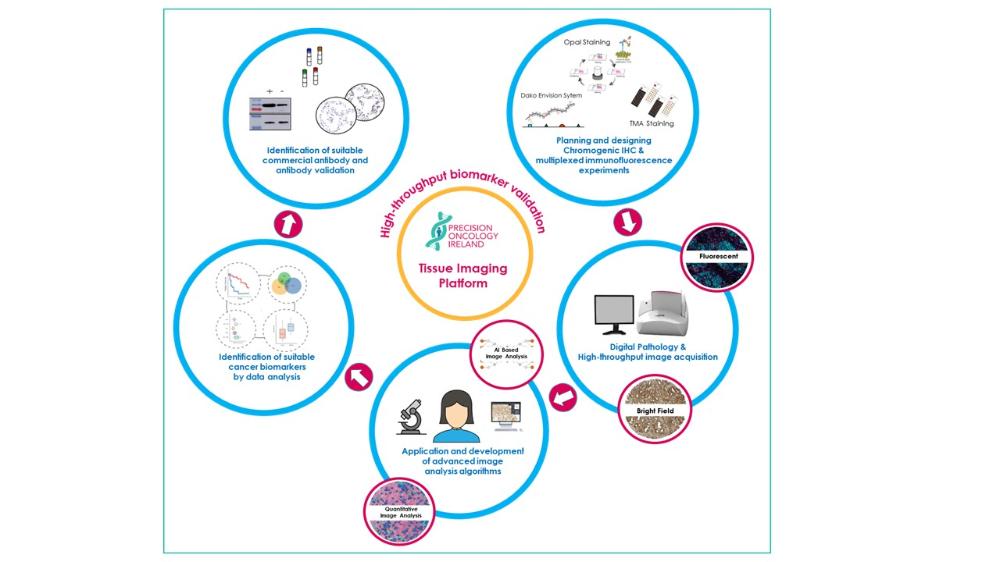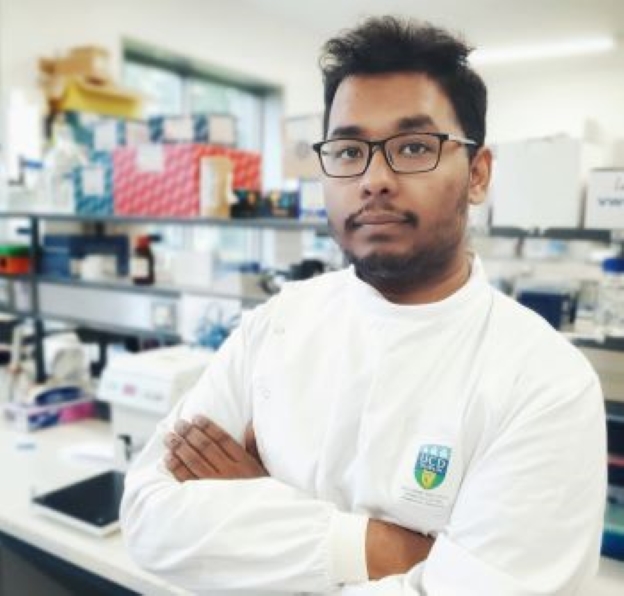

P4.4: A multiplexed tissue imaging platform for biomarker validation
Plain Language Summary
After surgical removal of the tumour, breast cancer patients often are prescribed chemotherapy to prevent the return of cancer in the body. But in most cases, conventional tests in hospitals alone are not enough to confidently predict the likelihood of tumor reappearance. For that reason, many early-stage breast cancer patients who will not benefit from chemotherapy still have to go through it. With having considerable side effects, the decision to take chemotherapy can result in worsening of patient condition. To solve this problem, our lab has previously identified a panel of 11 gene biomarkers, called OncoMasTR.
Biomarkers are biological measures that can be used as indicators of a specific disease state. In this case, measuring the abundance of these biomarkers in the patient’s biopsy samples can help us to successfully differentiate between high-risk patients who need to be treated with chemotherapy and low-risk patients who do not. Moreover, it has been widely known that the presence of different types of immune cells, the soldiers of our body’s immunity within the tumour can also be used as biomarkers that can help patients grouping for particular treatment strategies. Our project aims to find a combination of best-performing biomarkers out of the OncoMasTR and immune biomarkers, which will provide the best predictive output of disease reappearance in breast cancer patients.
In addition to that, we are developing a novel clinical test combining selective immune and OncoMasTR biomarkers. This test detects biomarkers using different colours at the same time in the same tumor sample. Simultaneous assessment of all the different kinds of biomarkers has the potential to make it far superior in predictive output compared to any other available tests.
Project Overview
Increasing proportions of patients are being diagnosed with cancer at an earlier stage, due to improved screening programmes. Many of these sophisticated techniques require the use of biomarkers, and associated imaging methods to quantify the existence or expression of these biomarkers.
A bottleneck in biomarker validation in tissue samples is that current chromogenic detection systems cannot detect multiple target antigens simultaneously. The project lead, Prof Gallagher, has been at the forefront of research into tissue-based imaging approaches for biomarker quantification for over a decade, with a recent focus on cutting-edge multiplexing techniques. The second bottleneck is imaging technology and capacity. The recognition that multimarker panels are necessary to achieve precision diagnosis and stratification requires imaging systems that allow multiplexing.
To address these research gaps, POI has developed a Tissue Imaging Platform using a three-pronged approach: (i) multi-marker fluorescence-based IHC staining; (ii) digital slide scanning to generate high-quality fluorescence images; and (iii) clinically validated image analysis software for fluorescence image analysis. This platform is utilised to develop new tissue-based multiplexed tests that can predict personalised, risk stratified treatment regimes across a variety of cancer tissue types. A key additional function of this project is coordinating biomarker validation activities across tumour types, as well as aid in study design and cohort acquisition. The platform not only benefits POI but also has broad-based utility for external parties.
This project, which is co-funded by the Irish Cancer Society, supports a Translational Research and Engagement Manager to manage the platform and provide specialist expertise in biomarker development. A Research Pathologist also provides expertise in terms of tissue quality curation, manual assessment and training of image analysis approaches. A PhD student is also linked to this project focussing on the application of novel tissue-based imaging approaches to measure inflammatory infiltrates in a range of cancer types.

For further information, visit (opens in a new window)www.cbtlab.ie
Project team



Chowdhury Arif Jahangir
PhD student

Dr. Mahsa Mirzaei
Postdoctoral Researcher


